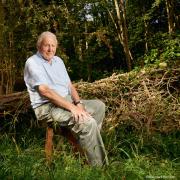Tony Pratt of The Canterbury Auction Galleries explains why some maps are collectors’ items
The father of English cartography was Christopher Saxton (c. 1542-1610) the first man to survey and map England and Wales, but at 15 shillings apiece, his atlas was for only the richest of travellers - until the appearance of John Speed’s more affordable alternative.
Tailor’s son Speed (1552-1629) was fascinated by history and became a member of the Society of Antiquaries, which fuelled his interest in genealogy and cartography.
His first work, a wall map of the biblical Canaan, gained him the patronage of Sir Fulke Greville, a friend of Sir Philip Sydney, one of the leading members of the court of Queen Elizabeth I and an honorary appointment to the Customs Service.
Now Speed was able to devote his time to map making. He toured extensively throughout the British Isles, recording in meticulous detail each county, highlighting its cities, towns, important buildings and major rivers.
The resulting maps, today so collectable, are believed to be the earliest recorded plans for many of the towns featured. The first appeared in 1608, and by 1612, all 67 were published in atlas form under the title ‘The Theatre of the Empire of Great Britain’. A huge success, editions sold out over the next 100 years.
We sold a copy of his ‘Kent, With Her Cities and Earles Described and Observed,’ published probably in 1611, for £660 and, judging by the success of the recent sale of a single-owner collection, we have eager buyers waiting for others.
Call Chis Wacker on 01227 763337 for more information.



























